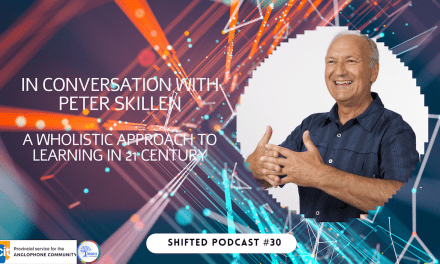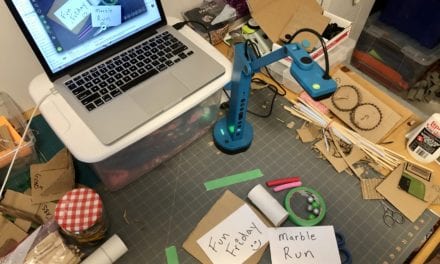LEARN’s annual recommendations for Summertime Reads surely comes at the perfect time. Most educators are dotting their i’s and crossing their t’s on what could be seen as the toughest, most challenging year of their careers. So thinking about reading for yourself will come with much shock and awe. After we spend a bit of time licking our wounds and cursing the year that was, it will be time… time to put away the Zoom schedule, the online learning rubrics, shut down that darn Google Drive, and for the love of god turn the bloody screen OFF!!! That’s where you step in to take time for yourself, yes you. What better way to start your summer than by getting a great book, curling up in the warmth of the sun, and letting the year that was, wash cleanly away. Time for self-care…these recommended books should fit into summertime plans pleasantly.
![]()
Little People, BIG DREAMS
by Isabel Sánchez Vegara
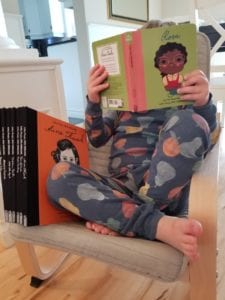
Carolyn Buteau
In the picture book series, Little People, BIG DREAMS, Isabel Sánchez Vegara showcases the memoirs and biographies of role models and world changers in an accessible and approachable way for young children. From Mahatma Gandhi, to Marie Curie, to Jane Goodall, these books are a big hit with my toddlers and will generate some great conversations over the summer.
![]()
The Body: A Guide for Occupants
by Bill Bryson
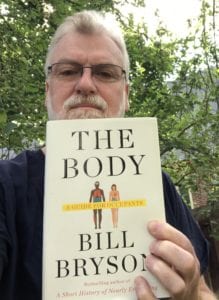
Thomas Stenzel
Almost everything you ever wanted to know about the vessel that is you, as well as many things you would rather not. The Body: A Guide for Occupants takes you through a well-researched journey of function, health, and disease with many humorous anecdotes to illustrate the trip and is written in Bryson’s usual accessible style.
![]()
End Game
by David Baldacci
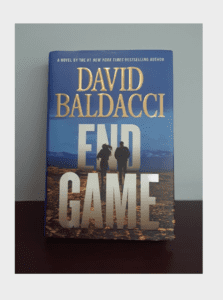
Rosie Himo
If you are a fan of suspense thrillers, this book will not disappoint. One of my favourite authors, Baldacci is a masterful storyteller and will have you on the edge of your seat from beginning to end with End Game.
![]()
I Survived: The Battle of D-Day, 1944
by Lauren Tarshis
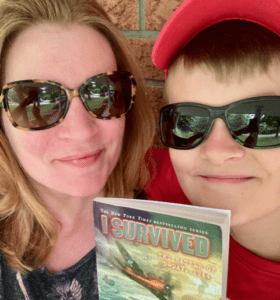
Kristine Thibeault
My son and I love the I Survived series for young readers by Lauren Tarshis. Each book is the story of a significant event in history that shaped our world. What’s different and compelling about the series is that the stories are told through the eyes of a child who witnessed and participated in sometimes unimaginable tragedy. But, as the tag line suggests: When disaster strikes, heroes are made. These stories are hope-filled and inspirational, and demonstrate how young people are strong and resilient in the toughest of times.
![]()
Dogs at the Perimeter
by Madeleine Thien
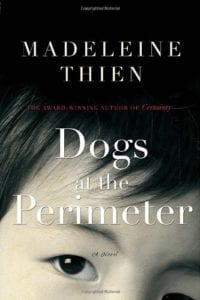
Michael Canuel
I just started reading Dogs at the Perimeter but what a gripping story written by a refugee from the Khmer regime and its genocide. The author lives in Montréal and has a distinct local flavour.
![]()
Thinking Multidimensionally About Ambitious Educational Change
by Fernando M. Reimers
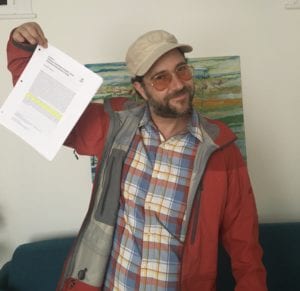
Ben Loomer
This past LCEEQ conference I had the pleasure of listening to Dr. Fernando Reimers and was inspired to download some of his articles and books. He seems like a really smart and empathetic person (just my type). What I got from his presentation was the idea that it’s not just one dimension that needs to be addressed when it comes to evolving our education system in a way that addresses global imperatives but rather many! Duh! It seems obvious when someone writes it out on paper. I’ll be reading the chapter Thinking Multidimensionally About Ambitious Educational Change.
![]()
Exit West
by Mohsin Hamid
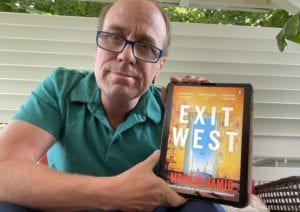
Paul Rombough
For the last few years I have sought out novels that evoke a “spirit of a place”. Exit West tells the story of two young people from an “unknown Muslim state”, who fall in love and decide to flee from their country as it becomes plagued by war. And so, from the very first pages this novel becomes universal, a portrayal of life in all cities that have thrived as colonies or as empires, that were once functional and free but are about to explode into violence and destruction. In the few first pages I’ve read, Hamid brilliantly presents this view of both past and future, lingering in every direction. But then a quick scan of some of the book’s great reviews tells me that Nadia and Saeed will soon magically escape through the hidden doors of the present. Wow, and I can’t wait to follow along.
![]()
The Year of the Flood & MaddAddam
by Margaret Atwood
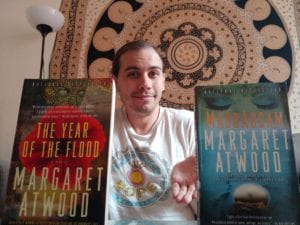
Michael Clarke
This summer, I would like to lose myself in the world of MaddAddam. An Atwood classic, I finished the first of the trilogy years ago. After tracking down the full set in 2nd-hand bookstores, I am ready to complete this series. I suppose I’ve been missing the artifice of fiction when reality has been strange enough to fill a novel or two.
![]()
D-Day: Dawn of Heroes
by Nigel Cawthorne
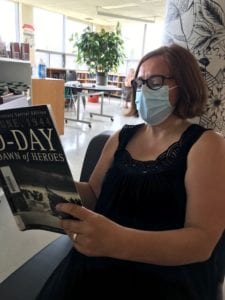
Anna Faustini
Reading a book is such a leisurely and relaxing time for me. Often my work and family life takes priority. Luckily, I escape during the summertime to my favorite public library and read books of my choice including D Day Dawn Of Heroes. Summertime here I come!
![]()
Le goût de partager par SAQ
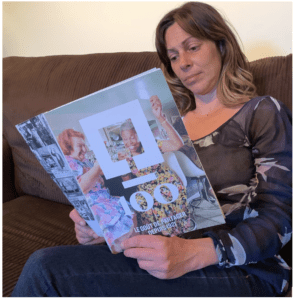
Julie Paré
Après une année effervescente, j’ai envie de savourer quelque chose de délectable, parfumé, chaleureux, convivial, suave. J’ai envie de me régaler d’un simple magazine, mais pas n’importe lequel… celui de la SAQ.
Le magazine Le goût de partager souligne les 100 ans d’histoire de la SAQ, en passant par la commission des liqueurs (1921-1961), à la régie des alcools du Québec (1961 à 1971), à la société des alcools du Québec (1971 à nos jours). Absolument exquis pour goûter l’histoire du Québec !
Vous pouvez retrouver ce magazine dans toutes les bonnes SAQ près de chez vous ! Bonne dégustation !
![]()
The Body Keeps The Score: Brain, Mind, and Body in the Healing of Trauma
by Bessel van der Kolk, M.D.
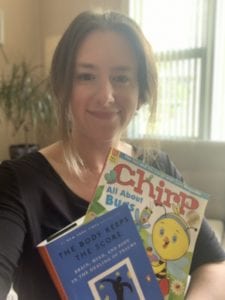
Emma Legault
The Body Keeps the Score: Brain, Mind, and Body in the Healing of Trauma helps to shine a light on the physiological impacts of trauma (i.e., how trauma affects the human body and brain – in addition to the mind). Once I picked this book up, I could hardly put it down. Well-written and accessible to those without specialized knowledge, the author offers a fascinating account of technological and medical breakthroughs in neuroscience and what they’ve taught us about the impact and treatment of trauma. Readers beware though, this book includes a wide range of traumatic accounts from study participants.
Chirp Magazine
My two-year-old daughter is always eager to check out the latest issue of National Geographic when it makes its monthly appearance in our mailbox so I just had to get her a monthly magazine subscription of her own. We’ve received two issues of Chirp Magazine so far – one all about hair and the other about bugs. These issues included a nice range of short reads, educational pictures, and activities for children and their parents to enjoy, including how to build a ‘bug hotel’, delightfully absurd moustache cutouts, and creative food prep ideas!
I recommend this inexpensive monthly magazine to parents of young children – bring on the love and enthusiasm for reading!
![]()
Shifting the Balance: 6 Ways to Bring the Science of Reading Into
the Balanced Literacy Classroom
by Jan Burkins and Kari Yates
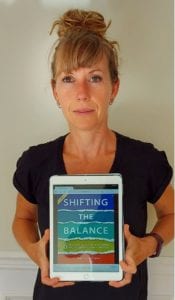
Monic Farrell
I’m fascinated that seemingly harmless terms like ‘balanced literacy’ and ‘the science of reading’ can get literacy educators so worked up! I’m really intrigued to read Shifting the Balance: 6 Ways to Bring the Science of Reading Into the Balanced Literacy Classroom, which claims to “address this tension as a critical opportunity to look closely at the research, reevaluate current practices, and embrace new possibilities for an even stronger enactment of balanced literacy”. If it’s done well, I think this could be a great book to discuss with other literacy educators as I think we can all benefit from looking closely at research, reevaluating our current practices, and embracing new possibilities. Anyone else want to Shift the Balance with me this summer?
What It Is
by Lynda Barry
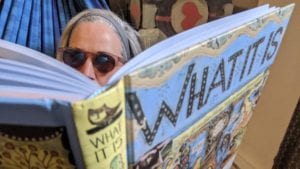
Dannielle Dyson
Lynda Barry is a cartoonist whose work lives in the magical realm of being a kid. During her book launch, she asked us to shout out our first phone number which was a wonderful doorway into recalling what can still be close to our hearts after all these years. Her approach to creativity is to remind us all of how we were all artists as kids, and that we can all still be. Her book, What It Is, reads like one of her writing workshops as she asks us to use our imagination and express what we find with the uninhibited approach of a child at play.
![]()
Chronicling the Days: Dispatches from a Pandemic
edited by Linda M. Morra & Marianne Ackerman
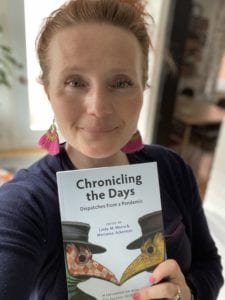
Sylwia Bielec
Full disclosure: I contributed a piece to this series of (very) short essays, Chronicling the Days: Dispatches from a Pandemic, about a day in the life of First Lockdown. Written and posted originally online in blog format, this oeuvre by the Quebec Writers Federation brings together an unlikely mélange of writers of all stripes, from the professional to the perhaps, all writing about an episode of their life in quarantine. Although it is tempting to draw a line under this last year, tempting to pretend that we were just in stasis, waiting for things to “go back to normal”, it is fundamentally a lie – as anyone in education can attest to. For even those of us who remained primarily at home, the wheels of time ground on, as we zoomed, as we waited, grew impatient, grew bored, grew flowers, gave up, sat up, lay down, lay awake. Who are we now? Maybe the answer is in the days.
![]()
The Oxygen Advantage
by Patrick McKeown
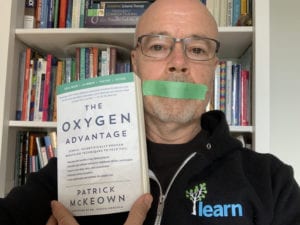
Craig Bullett
This book suggests strategies and practices to breathe more efficiently and maximize the use of oxygen in our bodies. The practice replicates high-altitude training which allows elite athletes to improve performance at their usual altitude. For the average person, this practice improves sleep and helps with general physical and cognitive performance.
I’ve already started The Oxygen Advantage but plan to dig deeper over the summer.
The first few chapters shared a practice that seemed just whacky enough for me to try. I have started taping my mouth at night while I sleep and have already noticed improvements. I’ve stopped snoring and conquered sleep apnea which has exhausted me for about a decade.
I look forward to continuing my reading into some more advanced breathing practices. Stay tuned!
![]()
Finding the Mother Tree – Discovering the Wisdom of the Forest
by Suzanne Simard
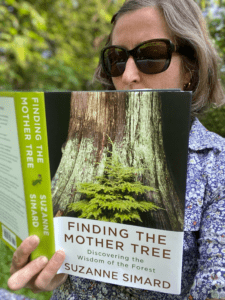
Christine Truesdale
In her first book, Finding the Mother Tree: Discovering the Wisdom of the Forest, Suzanne Simard narrates the story of how she emerged as a researcher and weaves in her decades of knowledge about the interconnectedness of forests and sustainable forestry practices. A Professor of Forest Ecology at the University of British Columbia, Simard has published hundreds of papers and given many talks and interviews around the world. She is world-renowned for her research on how trees interact through underground fungal networks and the role that hub or mother trees play in resource distribution and communication in forests. I’m looking forward to learning more about what lies below the forest floor…
![]()
The Walrus
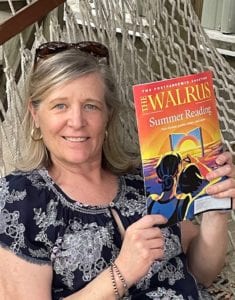
Dianne Conrod
Reading is a favourite pastime in every season. When I finish a book I don’t like to start another one the same day. This is when a great magazine is perfect and I love this Canadian gem, The Walrus. So far, from the Summer Reading edition, I’ve read an essay by Waubgeshig Rice on the paradox of being a diehard Indigenous fan of the Toronto Maple Leafs and a memoir on loneliness by Sharon Butala. Next, I will dive into some of the fiction and poetry. Bonus: it’s easy to read in my hammock.
![]()
The Simpsons and Their Mathematical Secrets
by Simon Singh
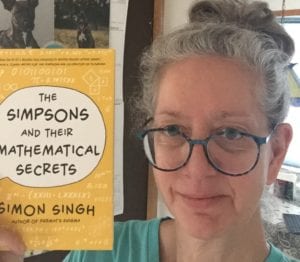
Audrey McLaren
My book is The Simpsons and Their Mathematical Secrets. I am actually reading this book for the second time. I am a huge fan of both The Simpsons and Mathematics, but I think that anyone would find this book fascinating. It’s a great story in itself about how the worlds of Math and Art truly intersected when The Simpsons, as well as Futurama, were created.
![]()
All Together Now: A Newfoundlander’s Light Tales for Heavy Times
by Alan Doyle
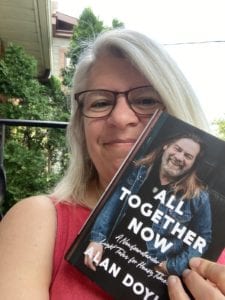
Kerry Cule
In this lighthearted book, All Together Now: A Newfoundlander’s Light Tales for Heavy Times, the lead singer from Canadian folk band Great Big Sea shares anecdotes about his adventures over the years. Like many Newfoundlanders, he is a born storyteller! Whether you read it all in one sitting or read a chapter/story at a time, I recommend that you pick up this book for a fun summertime read.
![]()
The Lost Words and The Lost Spells
by Robert Macfarlane and Jackie Morris
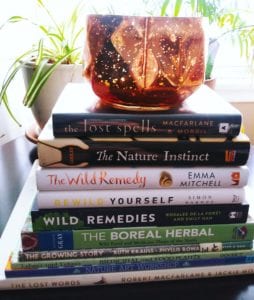
Katherine Dimas
I have a stack of nature-themed books on my bookshelf this summer, my companions for this season’s outdoor adventures. In particular, I recommend The Lost Words and The Lost Spells, two beautifully illustrated books of poems about words describing nature that were recently removed from a children’s dictionary in favour of words to describe technology. These books will inspire you to get out in nature and learn the names of animals and trees that surround you.
![]()
The Power of Awareness
by Neville Goddard
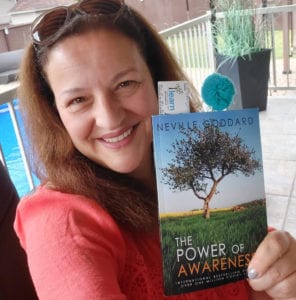
Carolina Toteda
I enjoyed reading The Power of Awareness. Goddard explains how our mind is powerful to realize what we want. He focuses on the power of your attitude and thoughts and the ability to bring them into your physical world. The great secret is a controlled imagination and well-focused attention. When we start to grow and change, our desires and goals will automatically get altered or change. We have been gifted an imagination to create what we want. “I AM that I AM” -Goddard
![]()
The Four Winds
by Kristin Hannah
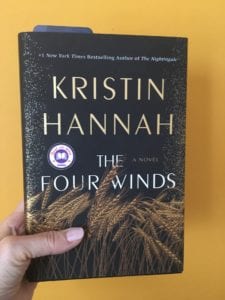
Shelley Armstrong
Looking forward to some summer reading of this fictional novel, The Four Winds, set in 1921 as ‘seen through the eyes of one indomitable woman whose courage and sacrifice will come to define a generation. A testament to hope, resilience and the strength of the human spirit to survive adversity.’
![]()
Beer Lover’s Flight Nite: The Ultimate Beer Tasting Experience
by Carlo Devito
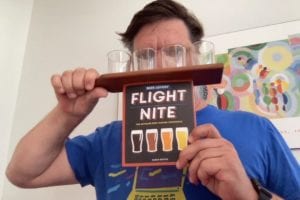
Chris Colley
Nut Brown Ale, Bitters, IPA, Kolsch, Pale Ale, Porter, Scotch Ale, Stout, Wheat, Pilsner… need I say more? about Beer Lover’s Flight Nite: The Ultimate Beer Tasting Experience? I’ll have one of each! Cheers… and HAPPY SUMMER READING



